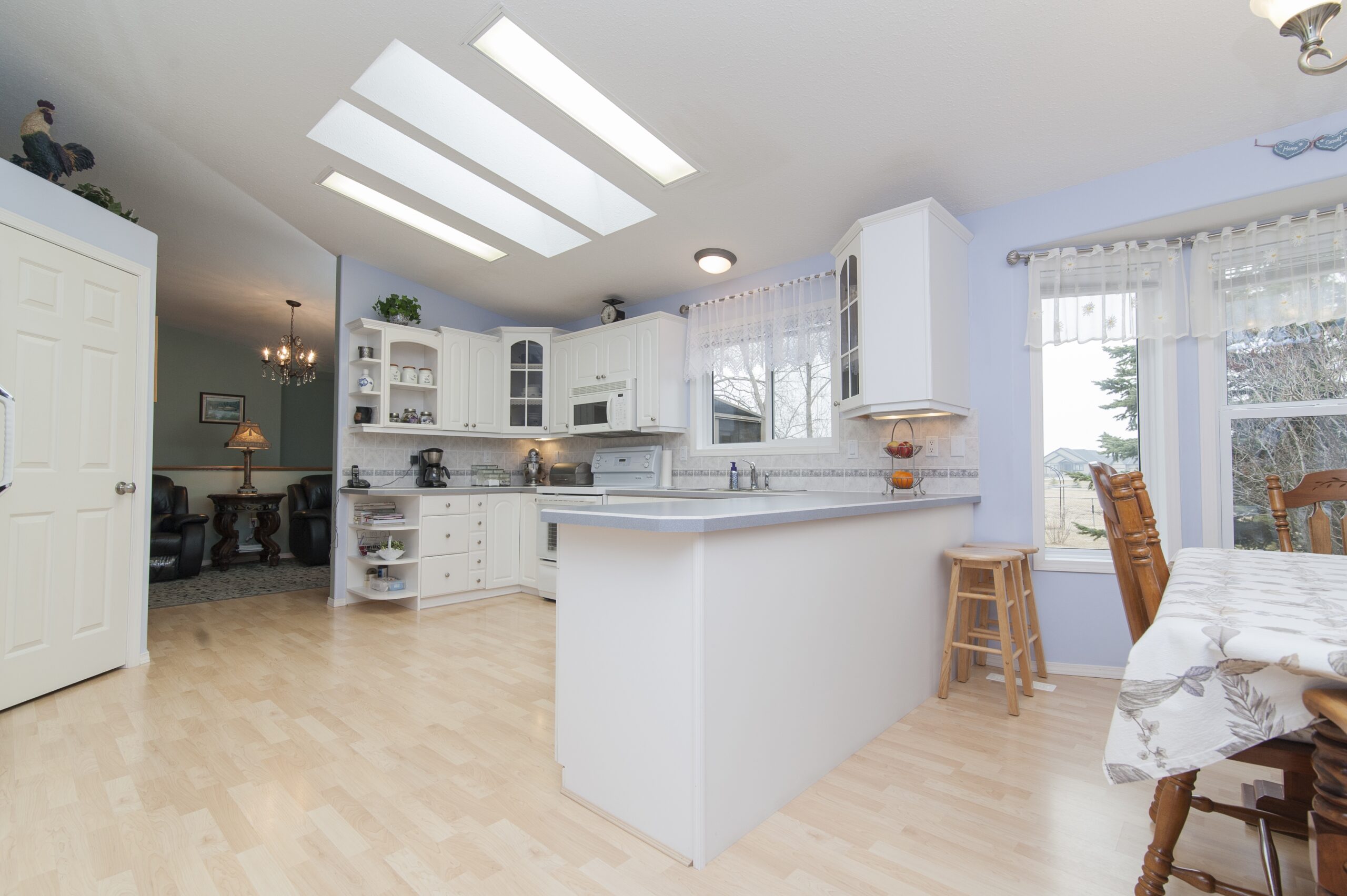The kitchen is the heart of the house where everyone comes together to prepare delectable meals and create lasting memories. Choosing the proper kitchen flooring design is an important choice that affects the room’s appearance and functioning. It might be difficult to sort through the possibilities when there is an overwhelming variety available. This extensive guide strives to make the process simpler by offering helpful tips and considerations to assist you in choosing the ideal kitchen flooring. We’ll cover every important aspect to ensure an informed choice, from style and cost to maintenance and durability.
Consider Your Lifestyle
It’s important to evaluate your lifestyle and how you use your kitchen before exploring the many flooring selections. Ask yourself things like:
- How often do you cook or entertain in the kitchen?
- Do you have children or pets?
- Is your kitchen a high-traffic area?
- Are you prone to spills or accidents in the kitchen?
Understanding your lifestyle will help determine the level of durability and maintenance requirements your kitchen flooring should possess.
Durability and Resilience
Durability is crucial because the kitchen is prone to spills, dropped utensils, and heavy foot traffic. Here are some choices for flooring that are renowned for their toughness and resilience:
Porcelain or Ceramic Tile
Tiles are highly tough and resistant to heat, stains, and scratches. They offer countless design options because of the large range of colors, patterns, and finishes available. Tiles can be cold and uncomfortable to walk on, so you may add mats or area rugs to offer some cushion.
Vinyl
Excellent cost, water resistance, and durability are all features of vinyl flooring. It is offered in a variety of designs, including sheets, tiles, and planks that resemble natural materials like stone or wood. Additionally, vinyl is more comfortable to stand on for extended periods of time than tiles since it is softer underfoot.
Laminate
A durable and more affordable option for hardwood flooring is laminate flooring. It can withstand heavy use in kitchens because it is resistant to stains, scratches, and fading. However, it’s crucial to keep in mind that laminate flooring can be damaged by water, so it’s better to mop up spills as soon as possible.
Engineered Hardwood
Engineered hardwood is a good alternative for kitchens if you want the coziness and beauty of hardwood. Compared to actual hardwood, it is less likely to bend or expand since it is made of layers of real wood veneer on top of a plywood basis.
Ease of Maintenance
Kitchen floors are susceptible to spills, stains, and food particles, making care an important factor. Choose flooring materials that are low maintenance and simple to clean:
Porcelain or Ceramic Tile
Tiles are simple to keep clean. They can be maintained with routine sweeping and occasional application of light detergent to the floor. Periodic sealing of grout lines may be necessary to avoid discoloration.
Vinyl
Vinyl flooring simply needs to be routinely swept up and occasionally mopped because it resists stains and spills. Avoid using abrasive chemical cleansers since they could damage the surface.
Laminate
Laminate flooring only has to be routinely swept or vacuumed. However, excessive moisture must be avoided because it might cause the boards to swell or distort.
Natural Stone
The use of marble or granite floors can give your kitchen an opulent feel. Natural stone is stunning, but it needs to be sealed frequently to keep its look and avoid stains.
Style and Aesthetics
In addition to being a useful room, the kitchen is also a place where elegance and beauty are important. Choose a flooring material that goes well with the overall style and theme of your kitchen:
Hardwood
Any kitchen benefits from the warmth, personality, and classic charm of hardwood flooring. You can have the desired style, whether it’s rustic, modern, or conventional because it is available in a variety of wood types, colors, and finishes. However, bear in mind that hardwood can be damaged by water, so clean up spills right once.
Tile
There are countless ways to design with tiles. You may design a distinctive and gorgeous kitchen floor using everything from traditional subway tiles to elaborate mosaics. Select hues and designs that go well with the color scheme and design of your kitchen.
Vinyl
In terms of design options, vinyl flooring has advanced significantly. With a variety of colors and patterns to fit your aesthetic tastes, it may simulate the appearance of natural materials such as stone or oak.
Concrete
Modern and minimalist kitchens look great with concrete flooring because of its current and industrial appearance. Various textures and finishes can be achieved by staining, polishing, or stamping the material.
Budget Considerations
Selecting the ideal kitchen flooring is essential for your budget. The cost of flooring materials varies greatly, so you must decide how much you are willing to spend:
Ceramic or Porcelain Tile
Depending on the quality, size, and style of the tile, pricing might range from more affordable options to more expensive options. Take into account the price of installation as well as any extra supplies like grout or underlayment.
Vinyl
Vinyl flooring is typically an inexpensive alternative that provides exceptional value. Depending on the quality and design, the price can vary, but it is normally less expensive than using natural materials like stone or wood.
Laminate
Another affordable option that offers the appearance of hardwood at a lesser cost is laminate flooring. It’s crucial to remember that the price of laminate might vary depending on the thickness and laminate quality.
Natural Stone or Hardwood
Natural materials like stone or oak are typically more expensive than alternatives made of synthetic materials. Depending on the precise kind of material and the quality of the installation, the price may change.
Sound Insulation
Consider the effect of sound transmission if your kitchen is near living areas or is part of an open floor design. Certain types of flooring materials naturally insulate sound better than others:
Carpet
Carpet flooring has a good ability to absorb sound if that is a priority. However, because of its sensitivity to stains and spills, carpet might not be the most practical option for the kitchen.
Cork
The natural sound-absorbing qualities of cork make it a great option for kitchens when noise reduction is sought. In addition, it is robust, cozy, and environmentally friendly.
Vinyl or Laminate
Due to their layered composition, vinyl and laminate floors offer some degree of sound isolation. However, adding area rugs or mats can improve sound insulation even further.
Key Takeaway
It’s important to carefully examine aspects like durability, maintenance, style, budget, and lifestyle when choosing the ideal kitchen flooring. You can choose a flooring material that not only improves the appearance of your kitchen but also withstands the demands of everyday use by taking into account of your unique needs and preferences. Whether you choose the everlasting beauty of hardwood, the adaptability of tiles, the cost-effectiveness of vinyl, or any other suitable alternative, this comprehensive guide is an invaluable tool to assist you in making an informed choice.












